Category: Currently Showing
-
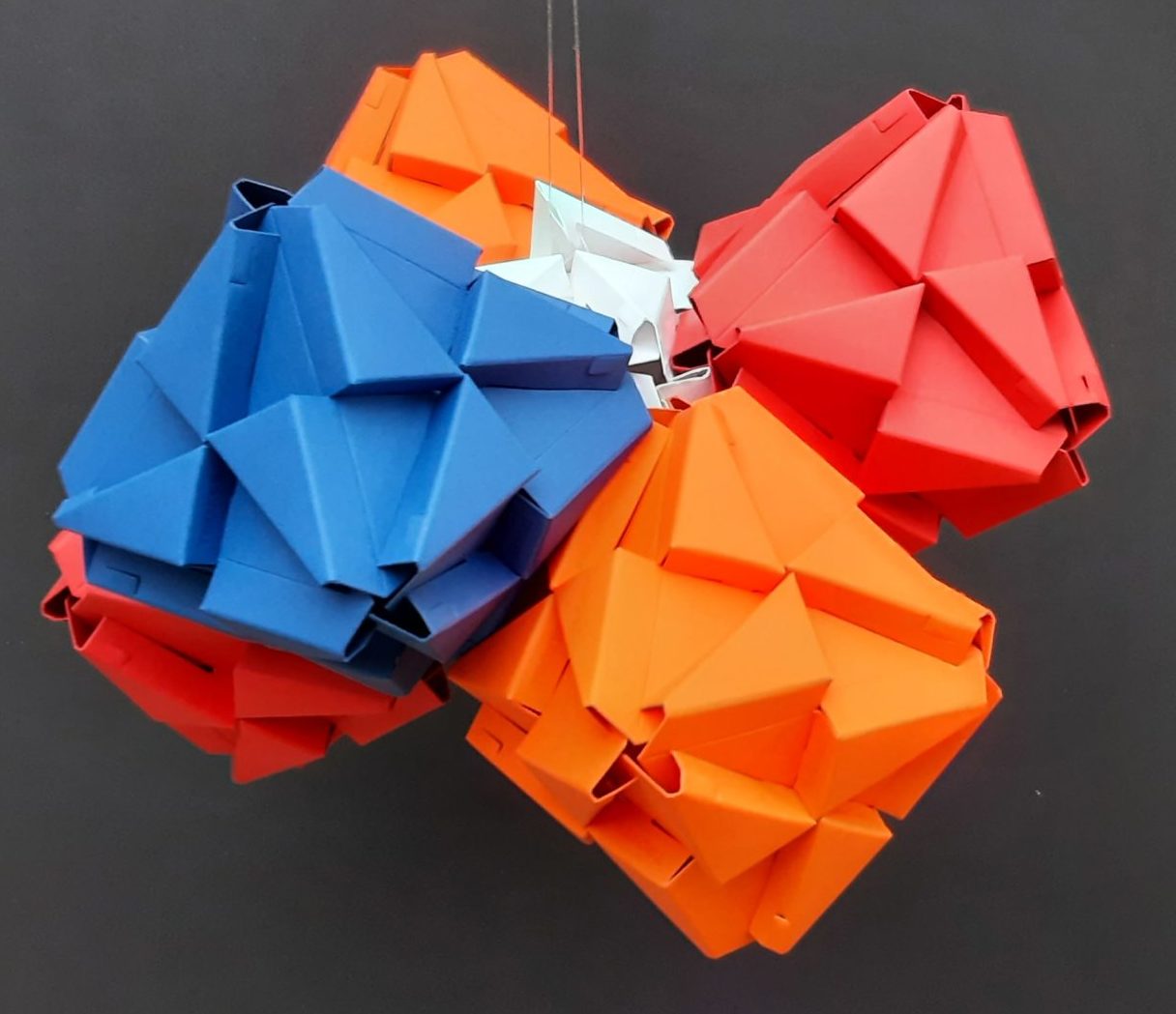
Jonathan Bobrow (Compound of seven octahedra)
Troxes, die-cut cardstock. Contributed by Studio Infinity. [44 F, 66 E, 24 V] The Troxes press-fit kit is a commercial product by Move38 Inc., expressly designed to create polyhedra with triangular faces that can be connected face-to-face. Here they are used to combine seven regular octahedra into a floret.
-
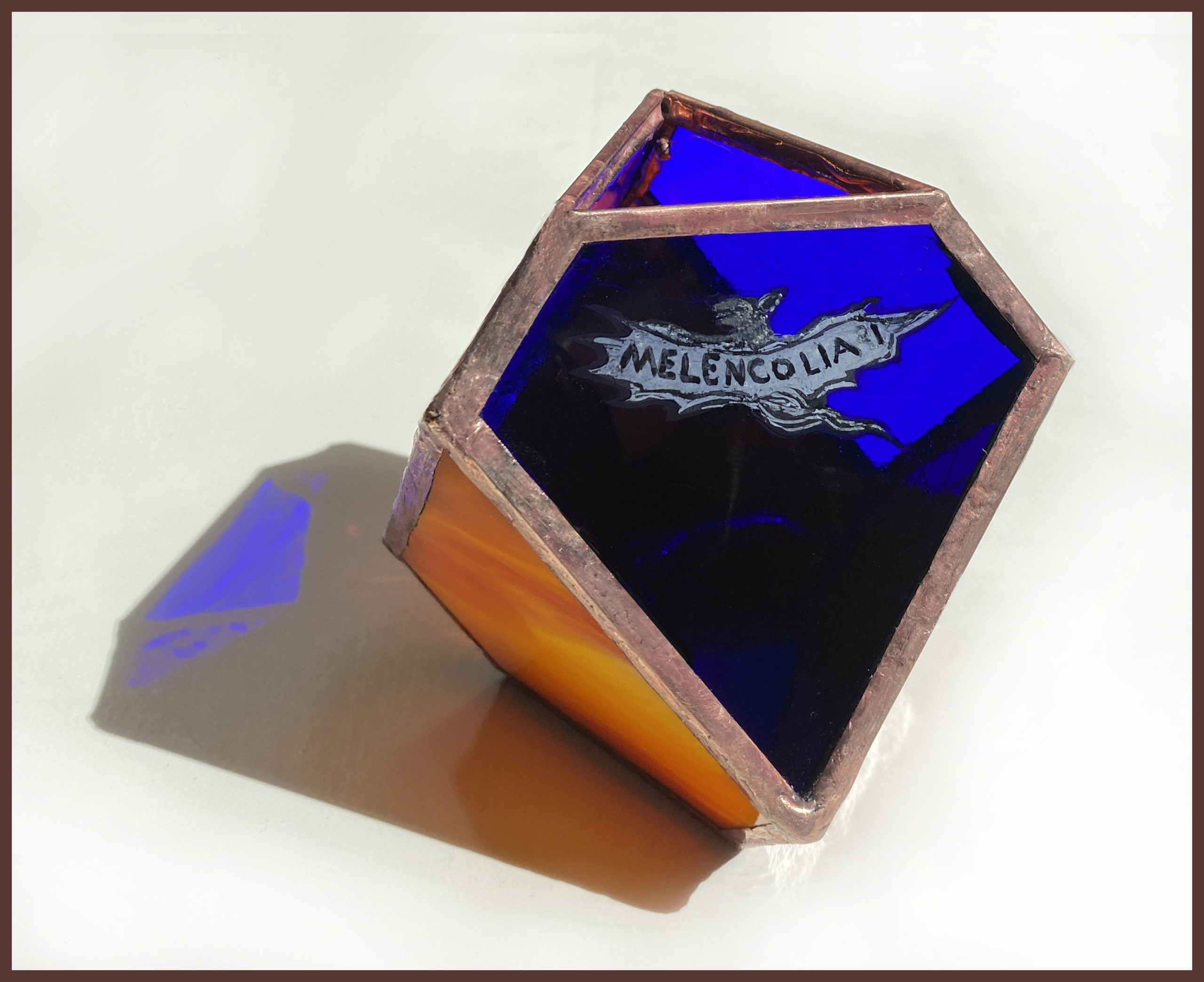
Bronna A. Butler and Jessica K. Sklar (Truncated triangular trapezohedron)
Dürer’s Bat, vitreous paints on stained glass, and solder [] Artist Bronna A. Butler and mathematician Jessica K. Sklar collaborate as the creative team QED Arts, LLC. Their piece, Dürer’s Bat, is a stained glass three-dimensional rendition of Dürer’s solid, the truncated triangular trapezohedron found in Albrecht Dürer’s 1514 engraving Melencolia I. Dürer’s Bat evokes…
-
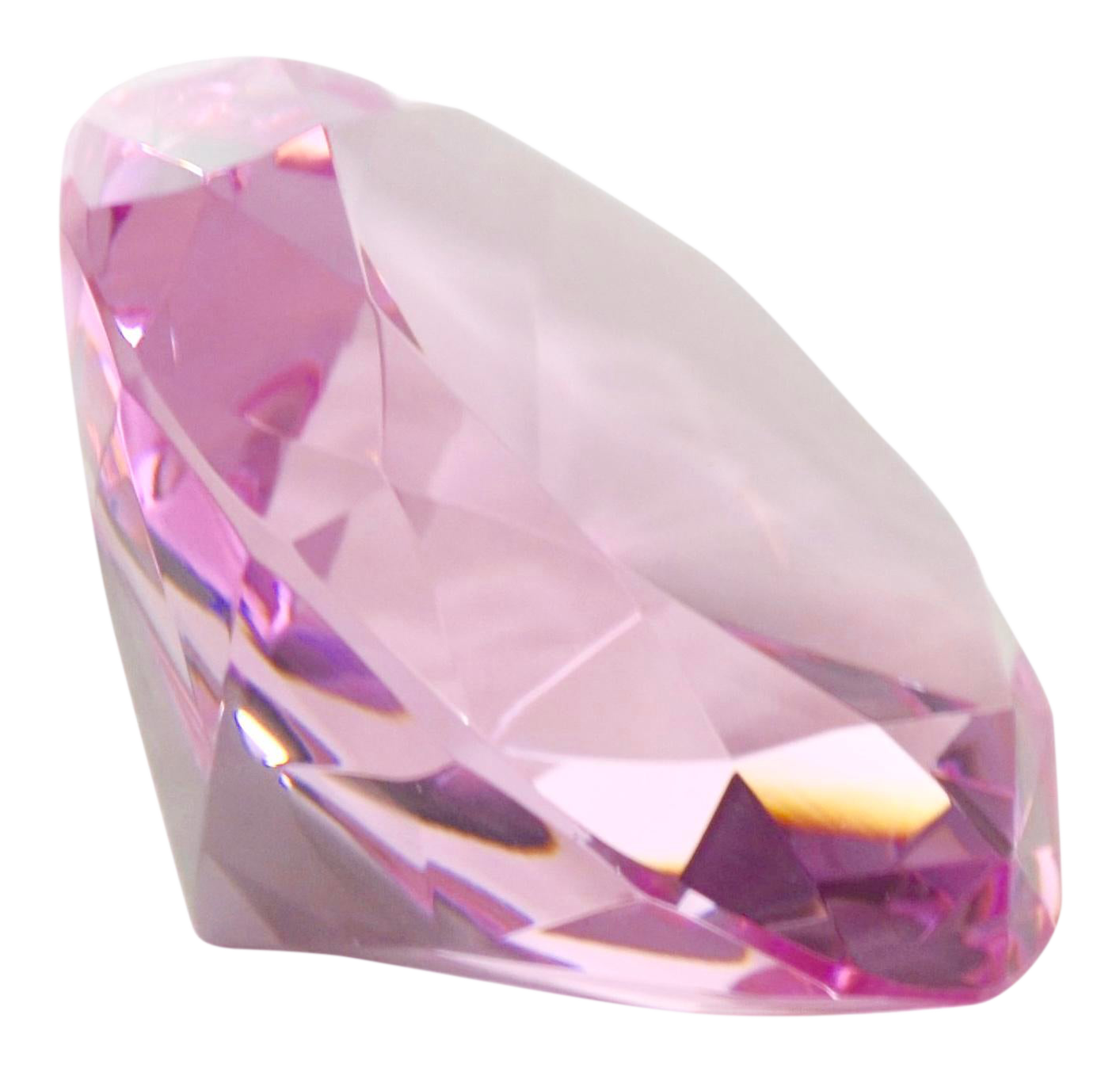
Corning Museum of Glass (Brilliant)
Diamond Paperweight, tinted glass [57 F, 92 E, 37 V] This glass block shows the polyhedral geometry of the standard brilliant cut for gemstones, the most common shape that diamonds are cleaved into for use in jewelry.
-
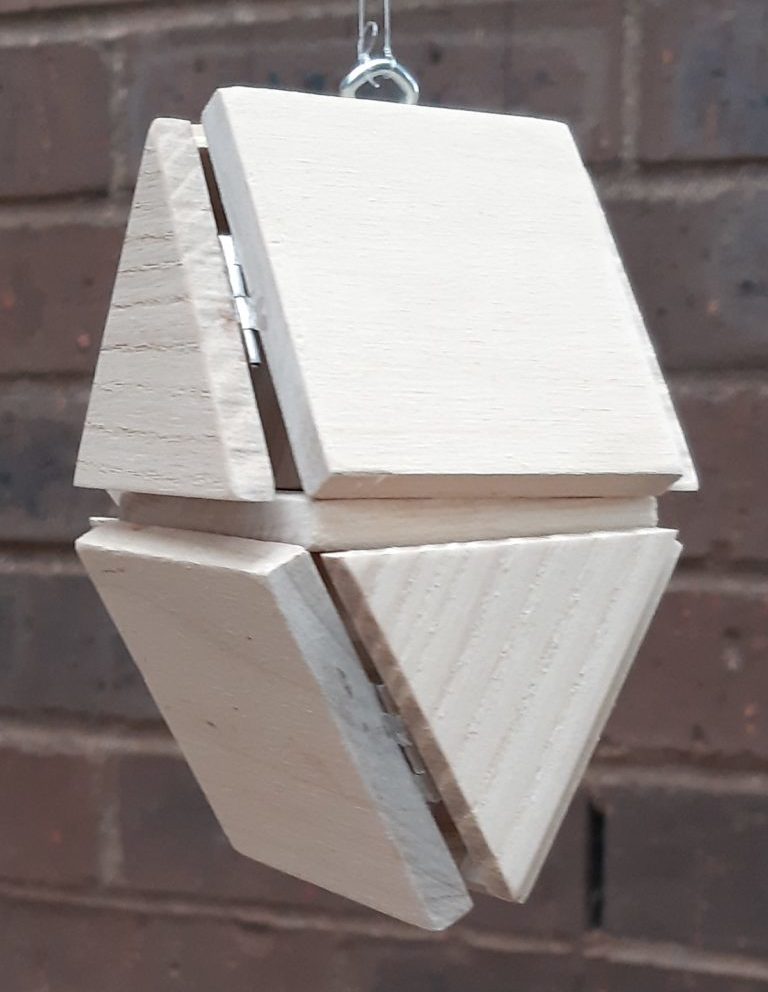
Tom Edgar (Gyrobifastigium)
Untitled, wood, hinges, and glue [8 F, 14 E, 8 V] The gyrobifastigium arises from gluing together two identical triangular prisms with square sides along one square side of each. However, one of the prisms must be turned a quarter turn (90 degrees). All the faces of the gyrobifastigium are regular polygons but the polyhedron…
-

Paul Ellis (Isosceles right triangular icositetrahedron)
Modular Waterbomb Base, paper [24 F, 36E, 14V] Modular origami model consisting of 6 waterbomb bases, each a different color, woven together. Regarded as an idealized geometric entity, this polyhedron would have zero volume — the space between faces adjacent along the outermost edges is infinitely thin. Nevertheless, the shape obeys the same Euler Polyhedron…
-
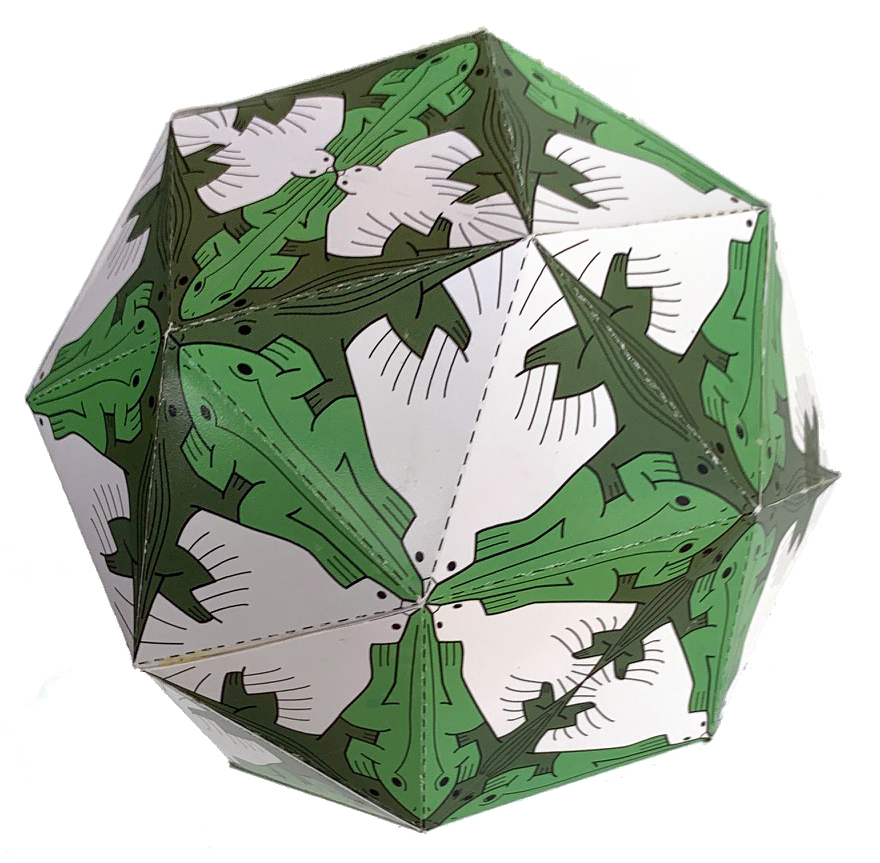
Robert Fathauer (Snub cube)
Tessellated Snub Cube, printed paper [38 F, 60 E, 24 V] This snub cube is decorated with a tessellation that has kaleidoscopic symmetry. The same motifs are distorted differently to fit the various square and triangular faces. The snub cube is one of the Archimedean solids, polyhedra with regular polygon faces with the property that…
-

Robert Fathauer (Joined truncated octahedron)
Joined, ceramic. Commissioned by Glen Whitney for Polyplane. [36 F, 72 V, 38 E] This shape fuses two more basic, familiar forms, the cube and octahedron, both Platonic solids. The edges of the original cube are indicated by dotted lines; they have become the long diagonals of twelve of the faces of Joined. On the…
-

Robert Fathauer and Henry Segerman (Polyhedral sphericon)
Countdown d24, high-impact acrylic. Contributed by The Dice Lab. [24 F, 42 E, 20 V] Based on a shape called the sphericon, this polyhedron advances along a zigzag path with a gentle push, incrementing the number shown by one with every tumble.
-
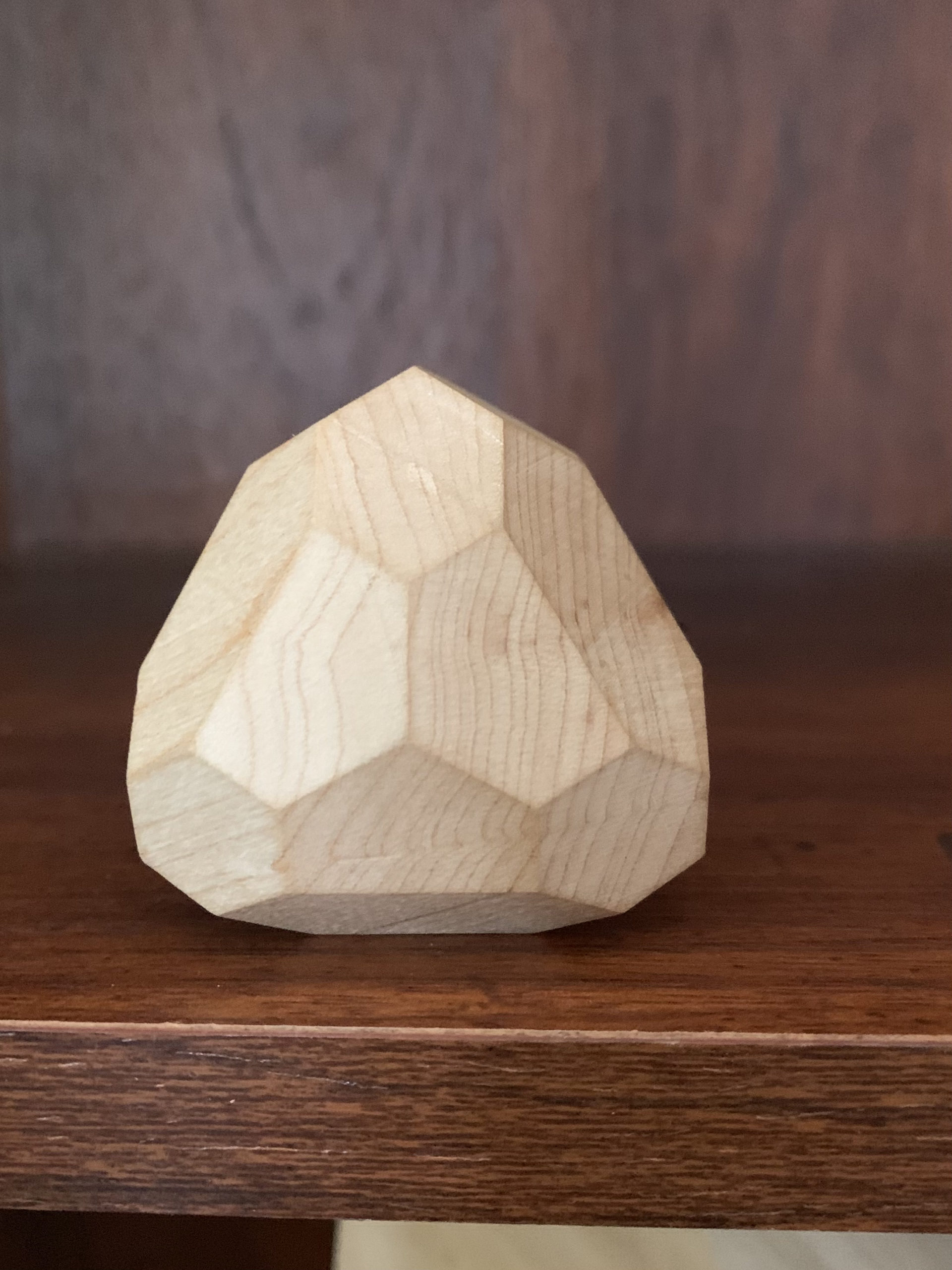
Lee Funk (Intersection of cube, triakis tetrahedron, and rhombic dodecahedron)
Untitled, sugar maple wood [30 F, 84 E, 56 V] This model is a replica of naturally occurring crystals in the isometric crystal system. It has tetrahedral symmetry. It is a combination of forms: Its thirty faces are each a portion of one of the six faces from the cube, twelve faces from the rhombic…
-
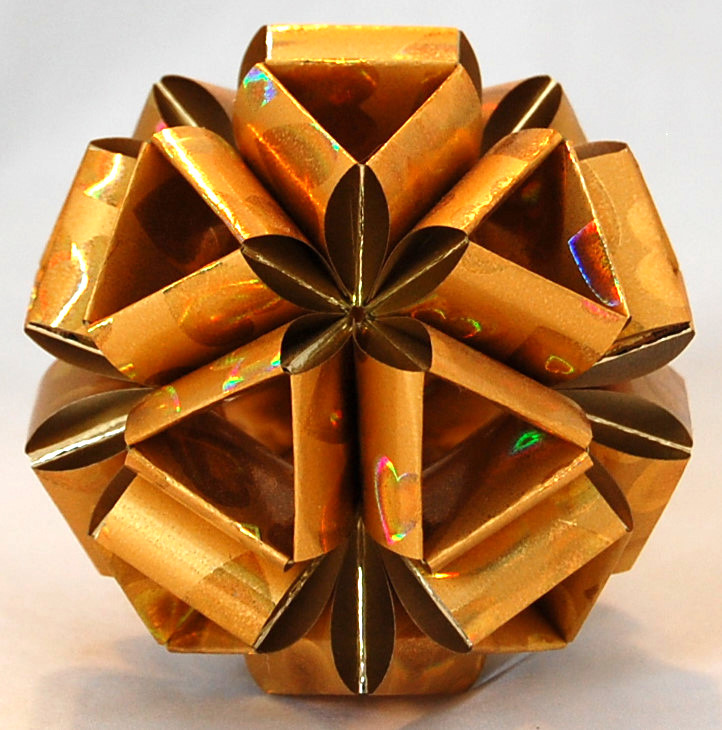
Faye Goldman (Regular icosahedron)
Snapology — Icosahedron, polypropylene ribbon [20 F, 30 E, 12 V] The regular icosahedron is one of just five Platonic solids – finite polyhedra with all identical faces and interchangeable vertices, in the sense that you can rotate the solid so that any vertex is pointing toward you but otherwise the shape looks identical.